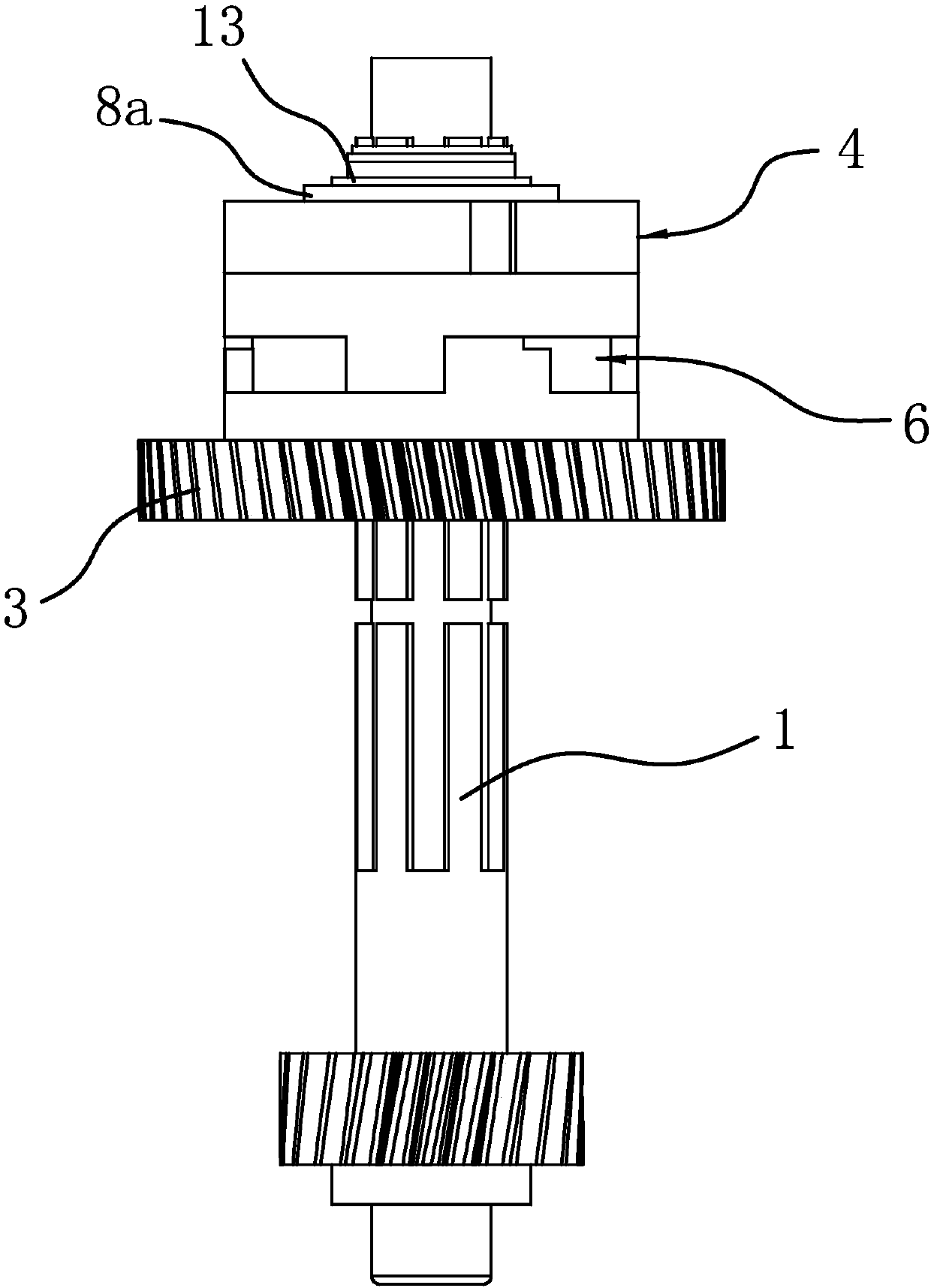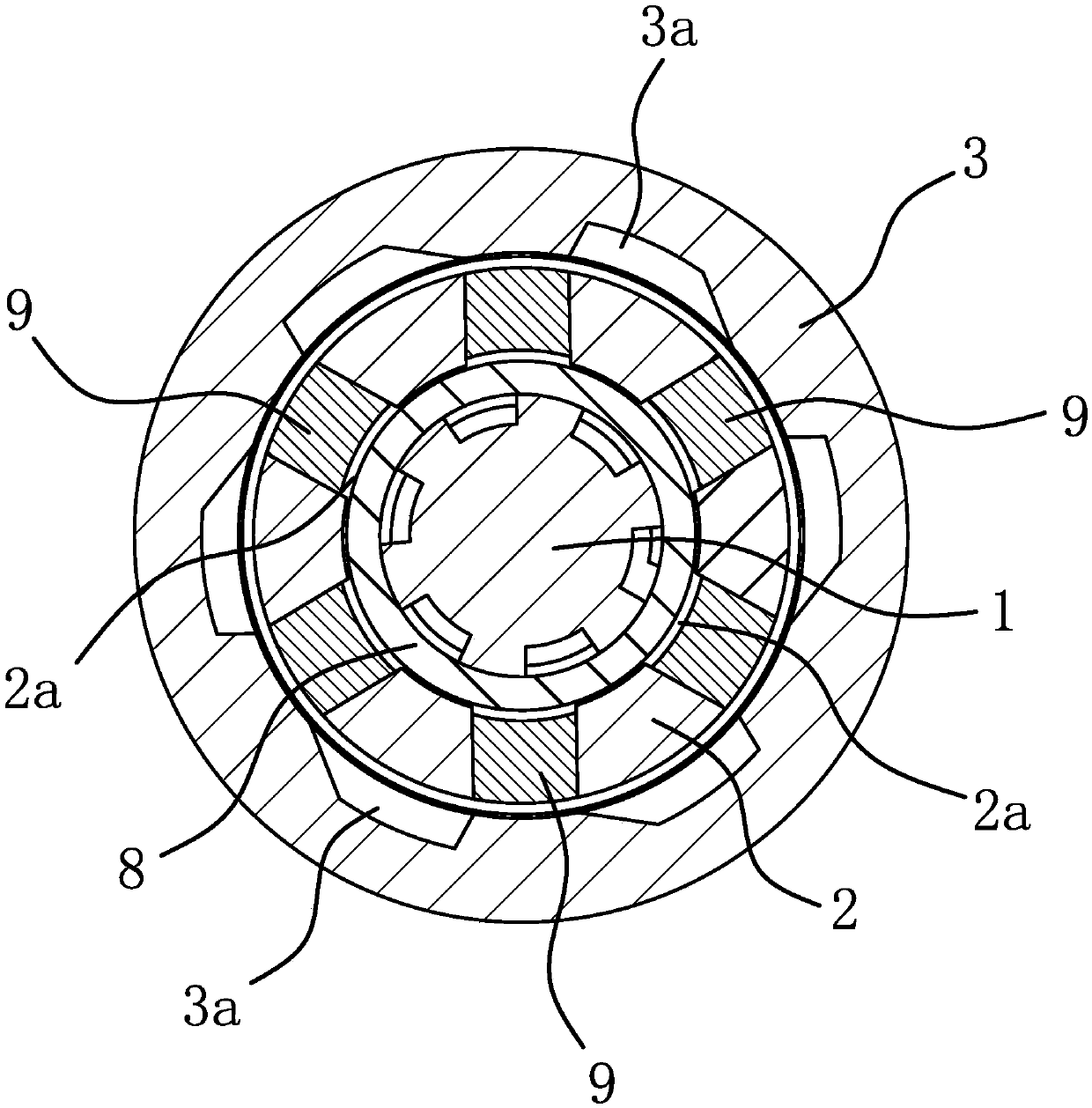Transmission mechanism of two-way variable-speed motor
A technology of transmission mechanism and variable speed motor, applied in the field of machinery, can solve the problems of shaking, disengagement and poor working stability of the transmission teeth and the transmission sleeve, and achieve the effect of reliable combination, stable combination and stable operation.
- Summary
- Abstract
- Description
- Claims
- Application Information
AI Technical Summary
Problems solved by technology
Method used
Image
Examples
Embodiment Construction
[0024] The following are specific embodiments of the present invention and in conjunction with the accompanying drawings, the technical solutions of the present invention are further described, but the present invention is not limited to these embodiments.
[0025] Such as figure 1 and figure 2As shown, the transmission mechanism of the two-way variable speed motor includes a main shaft 1, an output gear fixedly connected to the main shaft 1, an annular inner ring 2 sleeved outside the main shaft 1 and fixed circumferentially with the main shaft 1, and an inner ring 2. The circular outer ring 3 on the outside and the circular coupling sleeve 4 set on the outer side of the main shaft 1. There is a ring between the inner ring 2 and the outer ring 3 to make the inner ring rotate when the outer ring 3 rotates clockwise. 2 and the slippery one-way structure 5 between the outer ring 3. Between the combination sleeve 4 and the outer ring 3, there is a disengagement structure 6 tha...
PUM
 Login to View More
Login to View More Abstract
Description
Claims
Application Information
 Login to View More
Login to View More - R&D
- Intellectual Property
- Life Sciences
- Materials
- Tech Scout
- Unparalleled Data Quality
- Higher Quality Content
- 60% Fewer Hallucinations
Browse by: Latest US Patents, China's latest patents, Technical Efficacy Thesaurus, Application Domain, Technology Topic, Popular Technical Reports.
© 2025 PatSnap. All rights reserved.Legal|Privacy policy|Modern Slavery Act Transparency Statement|Sitemap|About US| Contact US: help@patsnap.com



